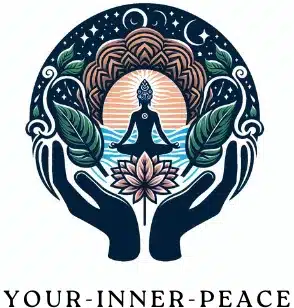
Introduction to Breathing for Pain Relief
Lower back pain is one of the most common ailments affecting people across all ages. Whether it’s due to poor posture, stress, sedentary lifestyle, or underlying health conditions, one powerful yet often overlooked solution lies in something we all do — breathing. Yes, your breath holds the key to reducing lower back pain naturally, and in just 10 minutes a day.
The Mind-Body Connection
Breathing links the mind and body. When you’re stressed, your muscles — including those in your back — tense up. When you breathe deeply and mindfully, your nervous system responds by calming the body and relieving tension.
Why Breathing Affects Lower Back Pain
Pain and breath are more connected than you might think. Poor breathing patterns, such as shallow chest breathing, can keep your muscles tight and inflamed. On the flip side, deep, controlled breathing signals your body to relax, releasing tight muscles and improving oxygen flow.
Understanding Lower Back Pain
Common Causes and Triggers
Lower back pain often stems from:
- Muscle strain or sprains
- Herniated discs
- Sciatica
- Stress-induced tension
- Poor posture or ergonomics
How Chronic Stress Impacts the Lower Back
Cortisol, the stress hormone, increases muscle tension. This chronic tightness, particularly in the lumbar region, leads to discomfort and restricted movement. Reducing stress through breathing directly combats this cycle.
The Science Behind Breathing and Pain Reduction
How Deep Breathing Stimulates the Parasympathetic Nervous System
The parasympathetic nervous system is responsible for “rest and digest.” Deep breathing activates it, helping lower your heart rate and blood pressure while easing muscle tension.
Oxygenation and Muscle Relaxation
When you breathe deeply, your lungs absorb more oxygen, which is then delivered to sore and tight muscles — including those in your lower back — facilitating healing and relaxation.
Preparing for Your 10-Minute Breathing Session
Creating a Quiet, Comfortable Space
Choose a peaceful spot. Sit or lie down with support for your lower back. Dim the lights, and optionally play calming instrumental music or nature sounds.
Best Times of Day for Practice
Morning sessions set a calm tone for the day, while evening sessions help release the tension accumulated from daily activities.
Top 5 Breathing Techniques for Lower Back Pain Relief
1. Diaphragmatic Breathing (Belly Breathing)
- Sit or lie flat.
- Place one hand on your belly, one on your chest.
- Inhale through your nose, inflating your belly.
- Exhale slowly through pursed lips.
2. Box Breathing
- Inhale for 4 seconds
- Hold for 4 seconds
- Exhale for 4 seconds
- Hold for 4 seconds
- Repeat for 4 cycles
3. 4-7-8 Breathing
- Inhale for 4 seconds
- Hold your breath for 7 seconds
- Exhale slowly for 8 seconds
4. Alternate Nostril Breathing
- Close your right nostril and inhale through the left
- Close your left nostril and exhale through the right
- Alternate for 5 minutes
5. Resonant Breathing (Coherent Breathing)
- Breathe in for 5.5 seconds
- Breathe out for 5.5 seconds
- Aim for 5-6 breaths per minute
Step-by-Step 10-Minute Routine
Warm-Up: Gentle Stretches and Posture Check
- Cat-Cow stretch (1 minute)
- Seated forward bend (1 minute)
- Shoulder rolls and deep inhale (1 minute)
Additional Tips to Maximize Benefits
Pairing with Gentle Yoga or Walking
To amplify the effects of breathing exercises, consider pairing your 10-minute practice with gentle physical activity like yoga or walking. These movements improve blood flow, reduce stiffness, and further promote muscle relaxation in the lower back. Even a short walk after your breathing session can extend the calming effect and keep your back mobile.
Hydration and Sleep Synergy
Hydration is often overlooked in back care. Muscles and spinal discs need adequate fluid to function optimally. Drinking enough water helps flush out toxins and maintain tissue elasticity. Similarly, prioritizing restorative sleep allows the body to repair inflammation and muscle tension. Deep breathing before bed can improve sleep quality, creating a positive feedback loop for healing.
Common Mistakes to Avoid
Shallow Chest Breathing
One of the biggest mistakes people make is breathing from the chest rather than the diaphragm. This shallow pattern keeps the body in a state of stress. Focus on expanding your belly as you inhale to ensure your breath is deep and calming.
Skipping Consistency
Another pitfall is inconsistency. Like any wellness practice, results from breathing exercises are cumulative. Skipping sessions or doing them only when pain spikes will limit the benefits. Set a daily reminder and make it part of your routine—your back will thank you.
FAQs About Breathing for Back Pain
1. Can breathing exercises replace pain medication?
While breathing can significantly reduce discomfort, it’s a complementary therapy, not a substitute for prescribed medication. Consult your doctor before making changes to your treatment plan.
2. How long until I feel relief?
Many people experience relief within a few sessions, especially with consistent practice. Deeper, long-term benefits often become noticeable after 2–4 weeks.
3. Are these exercises safe for herniated discs or sciatica?
Yes, most breathing exercises are gentle and low-impact, making them suitable even with spinal conditions. However, always consult your healthcare provider if you have any diagnosed back problems.
4. Should I breathe through the nose or mouth?
Nasal breathing is preferred as it filters, humidifies, and slows the breath, promoting a parasympathetic (relaxing) response.
5. What time of day is best for these exercises?
Morning and bedtime are ideal. Morning practice energizes and prepares the body, while evening practice helps unwind tension accumulated throughout the day.
6. Can I do these exercises lying down?
Absolutely. Many breathing techniques are effective whether you’re lying down, sitting, or standing—just ensure your spine is aligned and supported.
Conclusion: Breathe Your Way to Relief
Your breath is a free, powerful, and immediate tool that can ease lower back pain and improve overall well-being. By committing just 10 minutes a day to conscious breathing, you not only relieve physical tension but also cultivate mental calm, emotional clarity, and a deeper sense of control over your body.
Whether you’re dealing with chronic discomfort or occasional stiffness, integrating these techniques into your daily life offers a natural, sustainable solution. Start today, and breathe your way toward a healthier, more comfortable you.
Here's a little transparency: Our website contains affiliate links. This means if you click and make a purchase, we may receive a small commission. Don't worry, there's no extra cost to you. It's a simple way you can support our mission to bring you quality content.
